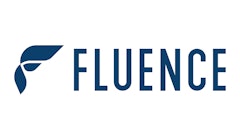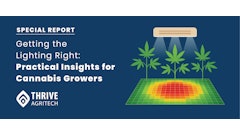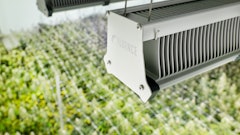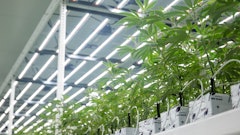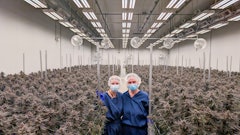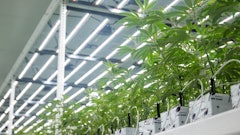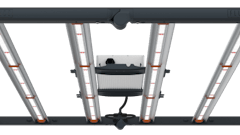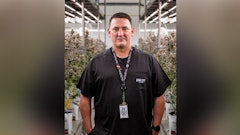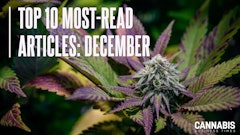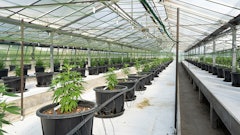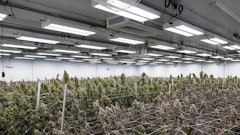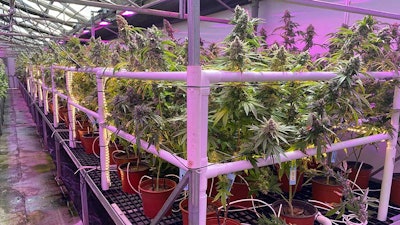
Editor's note: This is the first article in a series about intercanopy lighting in cannabis cultivation. StateHouse Holdings, a vertically integrated cannabis company based in California, led a group that conducted research to determine if applying light directly to all flowers on a single plant, and not just from above, improves photon conversion efficiency, resulting in greater yields produced at lower costs. The second article in the two-part series details the results of the research.
Commercial cannabis growers face an ever-evolving market and constant uncertainty. As a result, we must continually challenge our own thinking and build upon what we think we already know about growing. Across the industry, a primary objective is to reduce cost per pound while increasing quality and yield, to generate more revenue per square foot, per turn and per year. But how we pursue that goal will be essential to survival and success.
During the past few years, the cannabis industry has undergone a tremendous transformation. The introduction of legalization in many states, the rise of industrial cultivation and commercialization has led to substantial changes in the legacy cannabis community. In the past, cannabis activists pushed for information sharing regarding cultivation practices, but growers are hesitant with the commercialization of cannabis and everyone thinking they have hit the goldmine with a special secret sauce.
Nowadays, there is still a lack of solid commercial data from growers about successful, cost-effective and progressive cultivation practices that could help all cultivators as a group. With this in mind, it is essential to explore ways to build awareness and encourage the sharing of scientifically valid and commercially proven information within the cannabis community and industry to further advance the market as a whole. At Statehouse, a California-focused, vertically integrated cannabis company, we are taking an active approach in keeping the spirit of information sharing alive, especially among the legacy cannabis community, concerning the evolution of cannabis production practices. We hope you’ll join us.
With that said, we’d like to offer an innovative approach to optimizing cannabis yields by improving photon conversion efficiency while potentially reducing total energy use required per gram of biomass produced.
Photosynthesis Fundamentals
Key Metrics for Optimizing FDC2
Two well-known adages are fitting here: “You can’t manage what you don’t measure" and “Don’t be lazy in learning.” Keeping the simplicity, relevance and importance of these two quotes in mind can help as we examine light-related metrics and look at new opportunities to maximize yields in cannabis flower production systems.
In partnership with the American Flower Endowment, Dr. Jim Faust and Dr. Joanne Logan (from Clemson University and University of Tennessee, respectively) created interactive Daily Light Integral (DLI) maps and explained DLI this way: “Daily Light Integral represents the total photosynthetically active radiation (PAR) accumulated over one day (24 hours). Since plants are accumulators of solar radiation, this measurement is extremely useful when describing solar radiation as it affects plant growth. Daily Light Integral has become a familiar measurement for plant scientists and commercial growers.”
PPFD (photosynthetic photon flux density) is light intensity or instantaneous light measured in micromoles per square meter per second (μmol/m2/s). In contrast,
It’s important to note that natural DLI is tied not only to the sun’s seasonal intensity but also to your natural day length as it changes throughout the year. Keep in mind this addition or loss of light throughout the year directly impacts photosynthesis and yields as discussed earlier. When growing in a greenhouse, this is especially critical to understand.
Research out of Utah State University’s Crop Physiology Laboratory (
As growers, our goals are not always aligned with mother nature. To achieve the highest yields possible year-round, grow
The graphics below, created by Drs. Faust and Logan, reflect the variation in DLI based on U.S. geography and seasons. January is on the top, and July is below. The brightest reds on the July map represent DLIs of 55 to 65, while the pinks and purple on the winter map correspond to 5 to 15
U.S. DLI Levels, January. Both maps based on solar radiation data from 1998 to 2012. Screenshot of maps courtesy of American Floral Endowment. The interactive map can be found here: https://endowment.org/dlimaps/


U.S. DLI Levels, July.

StateHouse

Photon Conversion Efficiency (PCE)
Photon conversion efficiency is another important parameter to consider and measure when trying to maximize yield with light, as it directly affects the efficiency
A higher PCE means that more of your light energy is producing useful energy, which leads to higher overall system efficiency and yield. In photosynthetic systems, a higher PCE means more of the absorbed photons are being utilized to drive the photosynthetic process. This results in a higher rate of biomass production from the same amount of light energy.
When discussing cannabis flower production or biomass yield in general, the unit of measure for PCE is grams per mole (g/mole) of photosynthetically active radiation (PAR) light. You can apply this to a single square foot, cycle or year (g/mole/ft2/cycle). To maximize yield with light, it is important to design photosynthetic systems that have high photon conversion efficiency. This can be achieved
Currently, most growers only apply lighting from above the crop—and most commercial lighting is designed for that application. Obviously, this approach is due to plants being naturally adapted to capture light from the sun. But upper lea
Leaf Area Index (LAI)
Leaf Area Index (LAI) is a key metric used in many fields, including ecology, agriculture, forestry and climate science, to provide valuable information about plant canopy structure, plant growth and ecosystem functioning. For cannabis growers, LAI is a critical tool in optimizing photon capture during production.
Typically expressed as a ratio, LAI quantifies the amount of foliage or leaf surface area present in a defined area. More specifically, LAI is the ratio of total leaf surface area—including both the upper (adaxial) and lower (abaxial) surfaces of leaves—to the ground (or bench) surface area.
Whether they know it or not, cannabis growers use this metric when filling in their canopy space during flowering. But there are many different approaches to maximiz
For example, one way to
From an efficient drying and quality-ensuring perspective,
Flower Direct Cannabis Cultivation Strategies
As growers understand and appreciate Daily Light Integral, Photon Conversion Efficiency and Leaf Area Index, the bigger question becomes how we can optimize these metrics to maximize production,
Light Diffusion
In lighting, diffusion refers to the process of scattering or softening light rays to reduce harsh shadows and create a more even and uniform distribution of light. In a greenhouse, you are subject to shading and, as the sun rises and sets, your growing area receives varying amounts of light throughout the day. By diffusing the light, as shown in the figures courtesy of Yuhua Glass below, your crop/growing area can receive more consistent light levels throughout the day while possibly accumulating more total light (DLI) during a single day.
Light diffusion also can help with temperature/heat management issues caused when wasted light concentrates on non-plant surfaces and contributes to radiant heat levels. With th

While this may sound new to some growers, the proven strategy of maximizing diffusion and increasing light accumulation in plants in a single day — increasing single-day DLIs — has been integrated into traditional greenhouse production system designs for more than a decade. Understanding the benefits of diffusion, we can appreciate the possibilities when plants are able to absorb photons from all angles, not just from above.
Moving Beyond Top Lighting
Before
Chlorophyll is the molecule responsible for capturing light energy and transferring it to other molecules in the photosynthetic pathway. Without chlorophyll, plants and other photosynthetic organisms would not be able to produce the energy they need to survive nor convert that energy into biomass.
Knowing the importance of the role of chlorophyll in photosynthesis and its direct impact on plant growth/biomass production, it’s also critical to acknowledge that cannabis flowers are green. Yes, photosynthesis in fruits and flowers is also significant, not just leaves; green tomatoes are just one example. This principle may be crucial to maximizing your PCE during cannabis flower production.
It's time to now ask the question: Would applying light directly to all flowers on a single plant (throughout the whole vertical and horizontal profile) increase photon capture, therefore increasing photosynthesis
Dr. Bruce Bugbee at Utah State University’s Crop Physiology Laboratory offers additional support for this idea, including
RELATED: Light Intensity Benefits and Boundaries
“Cannabis flower photosynthesis is proportional to chlorophyll and surface area of the flowers. Mitch has data indicating that the flowers contribute up to 30% of the total photosynthesis at harvest. This is based on canopy photosynthetic measurements after removal of the leaves,”
To date, much of the research exploring more direct application of light to cannabis flowers, central to Flower Direct Cannabis Cultivation, has focused on supplementing top lights with inter-canopy lighting (ICL), sometimes called intra-canopy lighting, which places supplemental lighting into the canopy itself. Bugbee’s lab is not alone in acknowledging ICL’s potential for improving plant growth and yield.
Many other universities have also
Upcoming Project: Intercanopy Lighting Validation Group (ICLVG)
Based on StateHouse’s own robust internal experiments and data from related research, the company has initiated a project, partnering with the Cannabis Research Coalition, other global growers and Grow Light Design (GLD) to further explore and potentially validate FDC2 lighting principles through the application of a very specialized form factor of lighting fixture designed specifically for cannabis production.
Below
The


The objective of the study is to determine the impact of redistributing the same DLI (same amount of energy used) between top lighting alone vs. the combined application of top lighting plus th
The study partners will run the exact same trial in all of their different R&D systems, using fixtures provided by GLD.
Travis Higginbotham is a commercial cultivation specialist and business owner with close to a decade of experience in commercial horticulture. As Vice President of Cultivation for StateHouse, he oversees a 230,000-square-foot cannabis greenhouse operation, running all cultivation, postharvest and bulk sales. His extensive background includes positions as VP of Sales and Business Development at The Hemp Mine, Direct of Research and Development for Battlefield Farms, and Global Director of Horticulture Service for Fluence Bioengineering. In addition, he is the co-inventor of two smart farming patents focused on managing Photoperiod and Light Acclimation, respectively. He holds a BS in Horticulture from Clemson University and an MS in Horticulture from Virginia Tech University.













